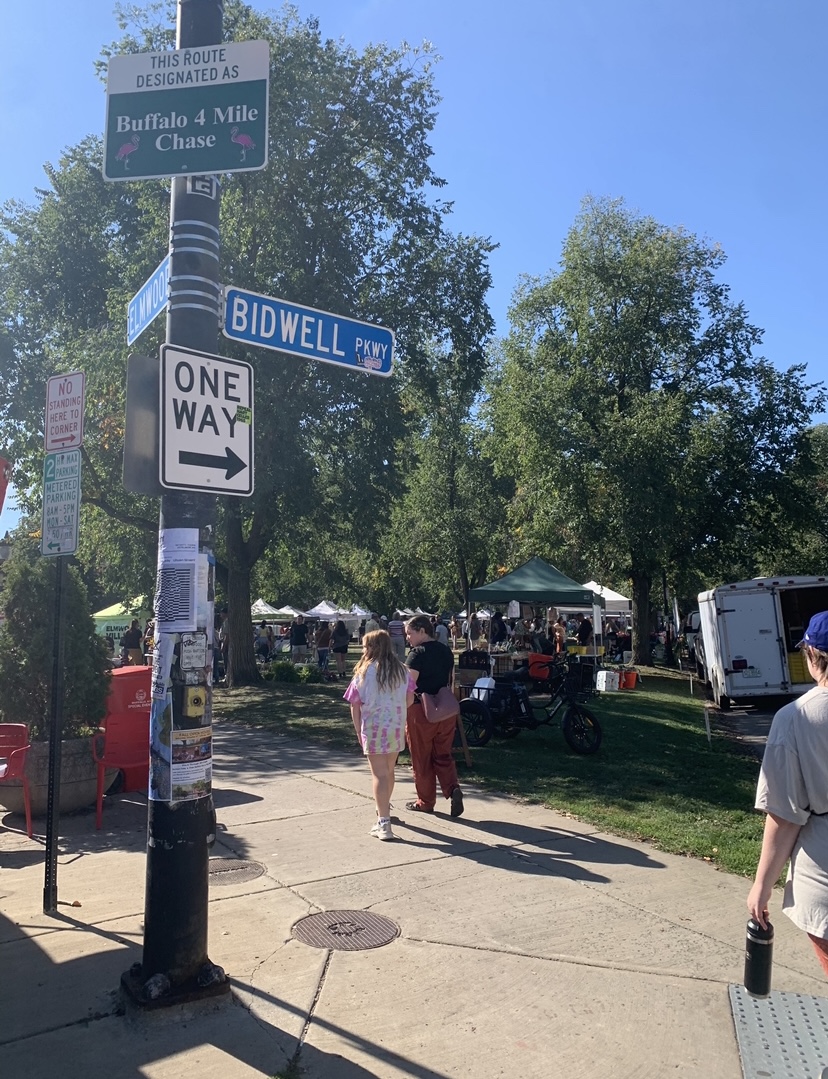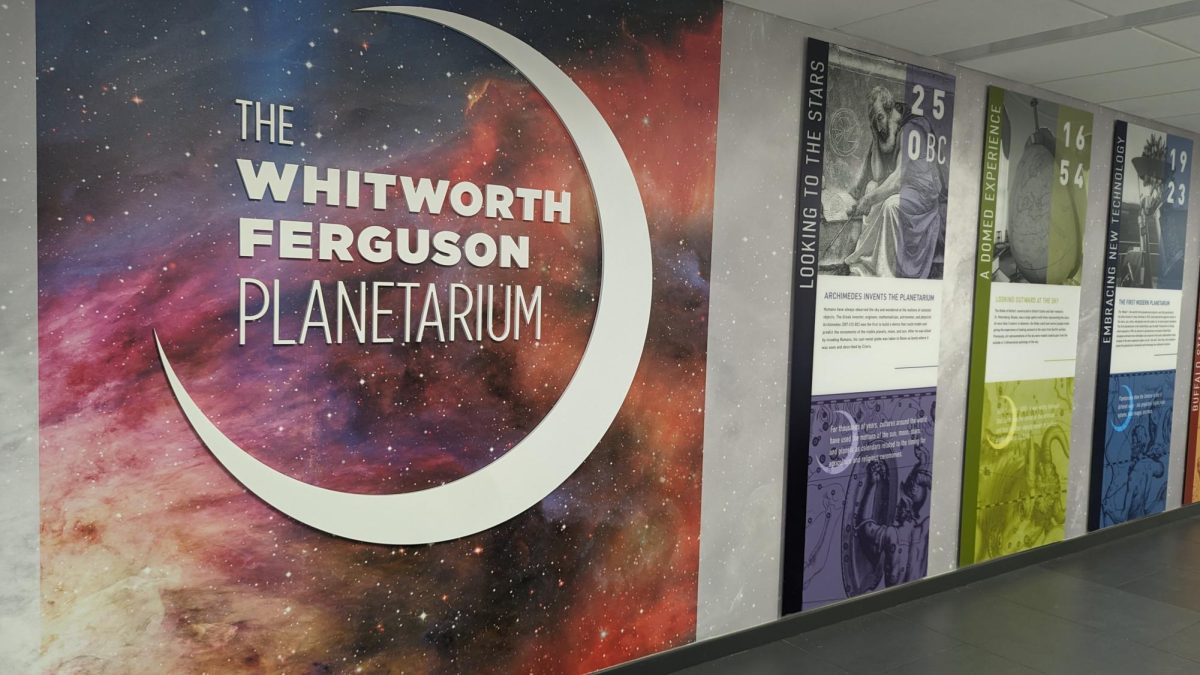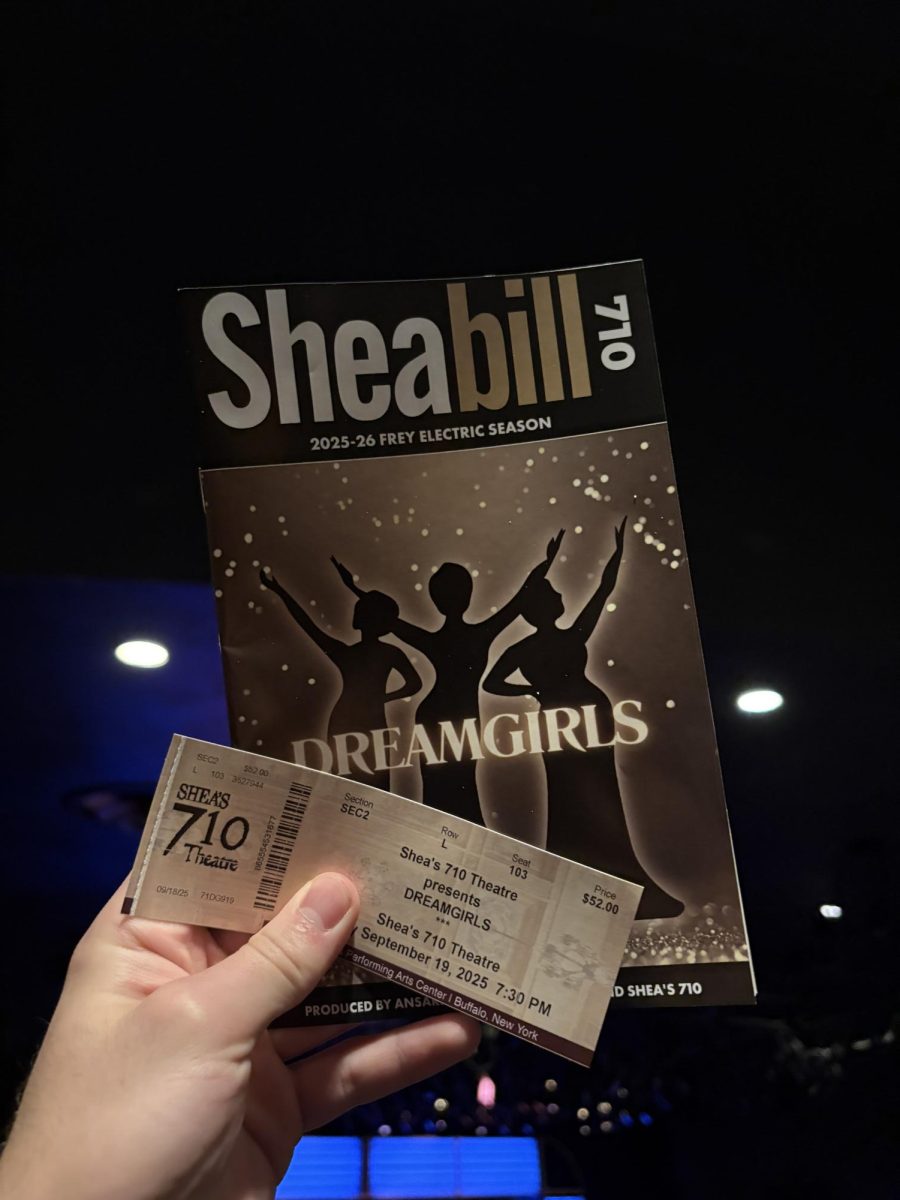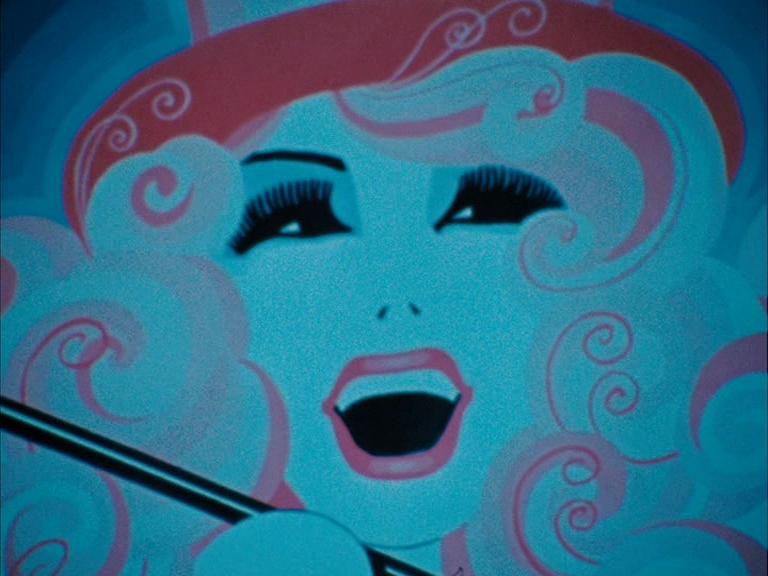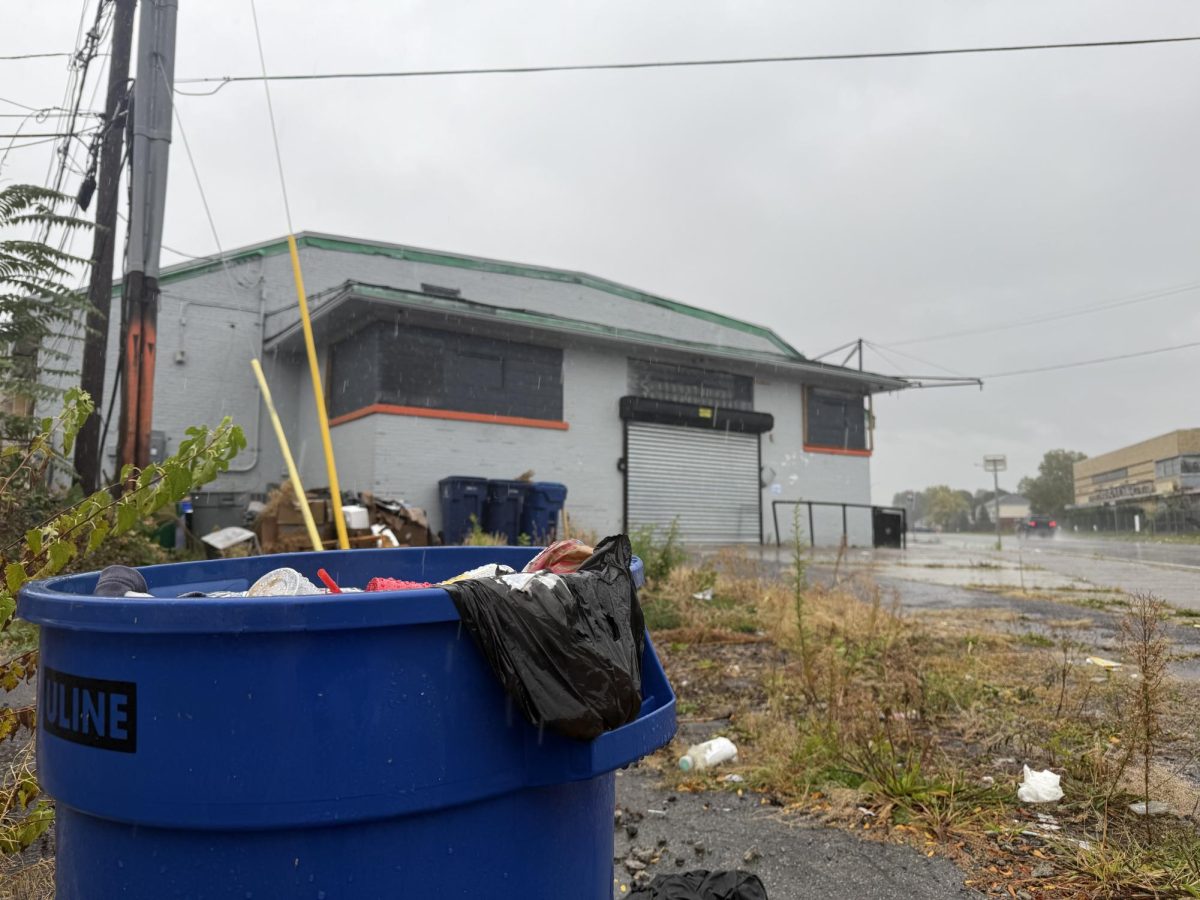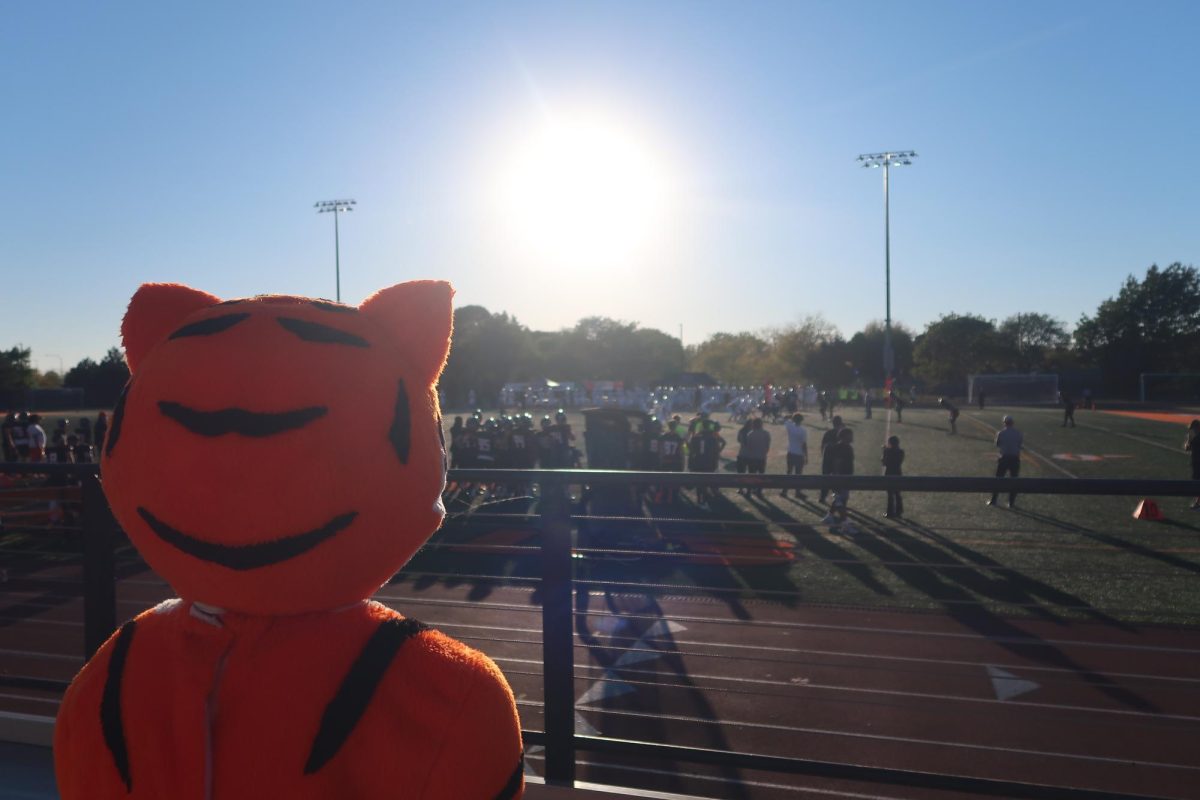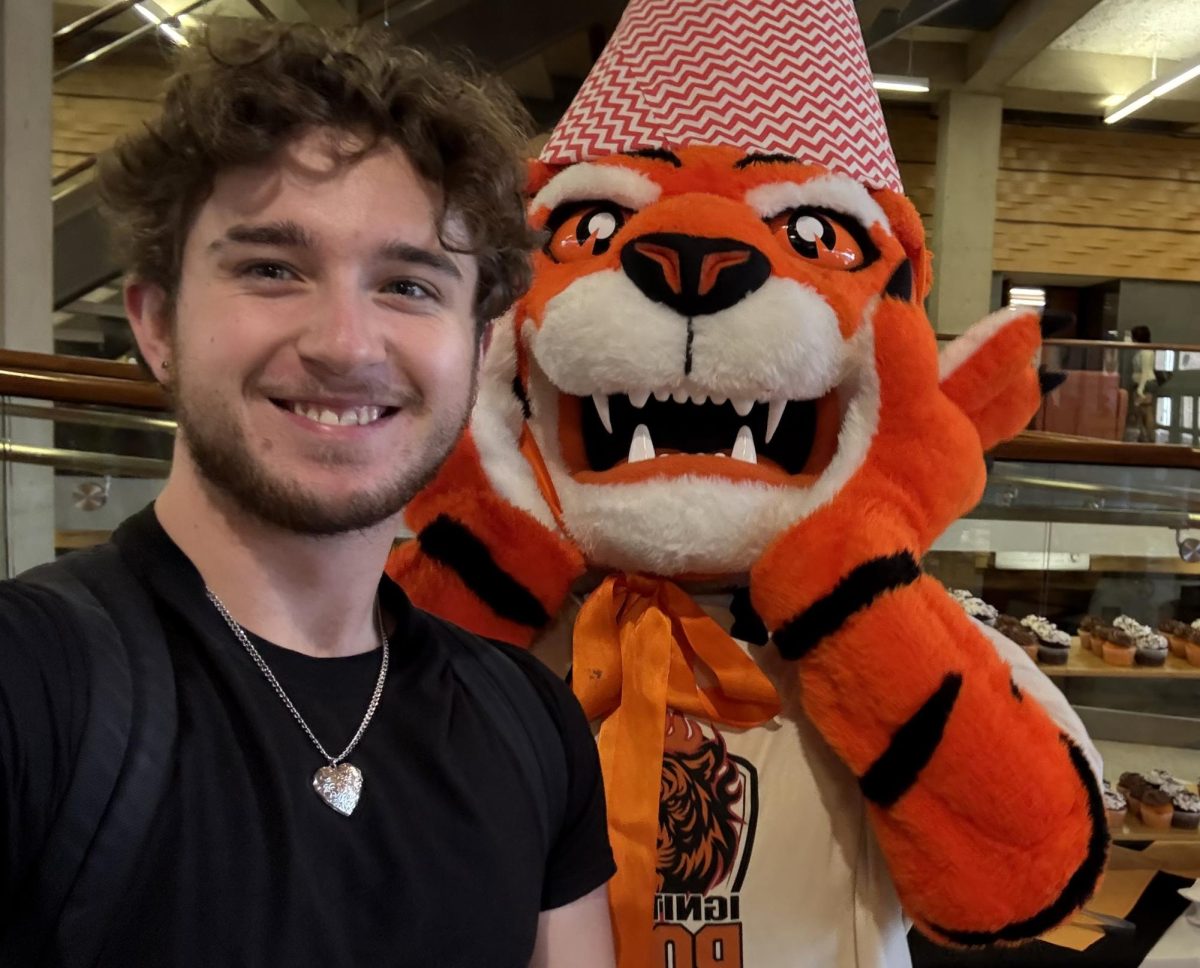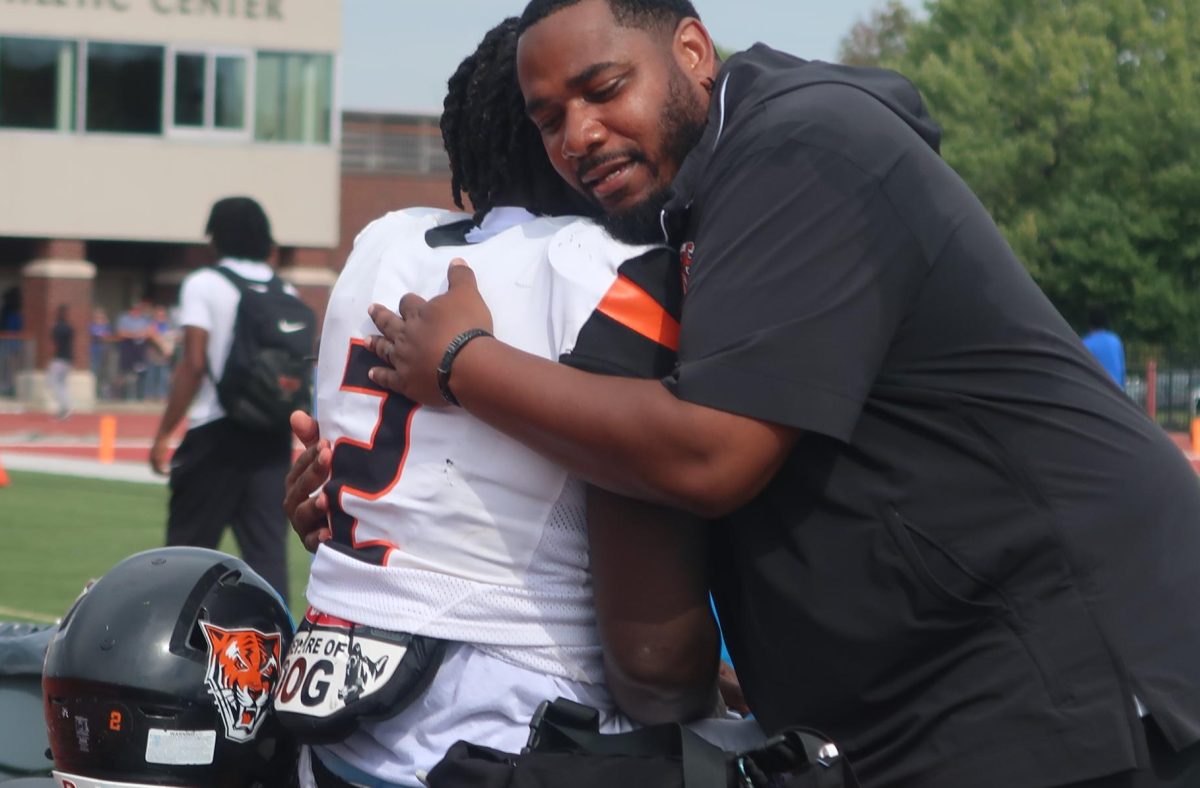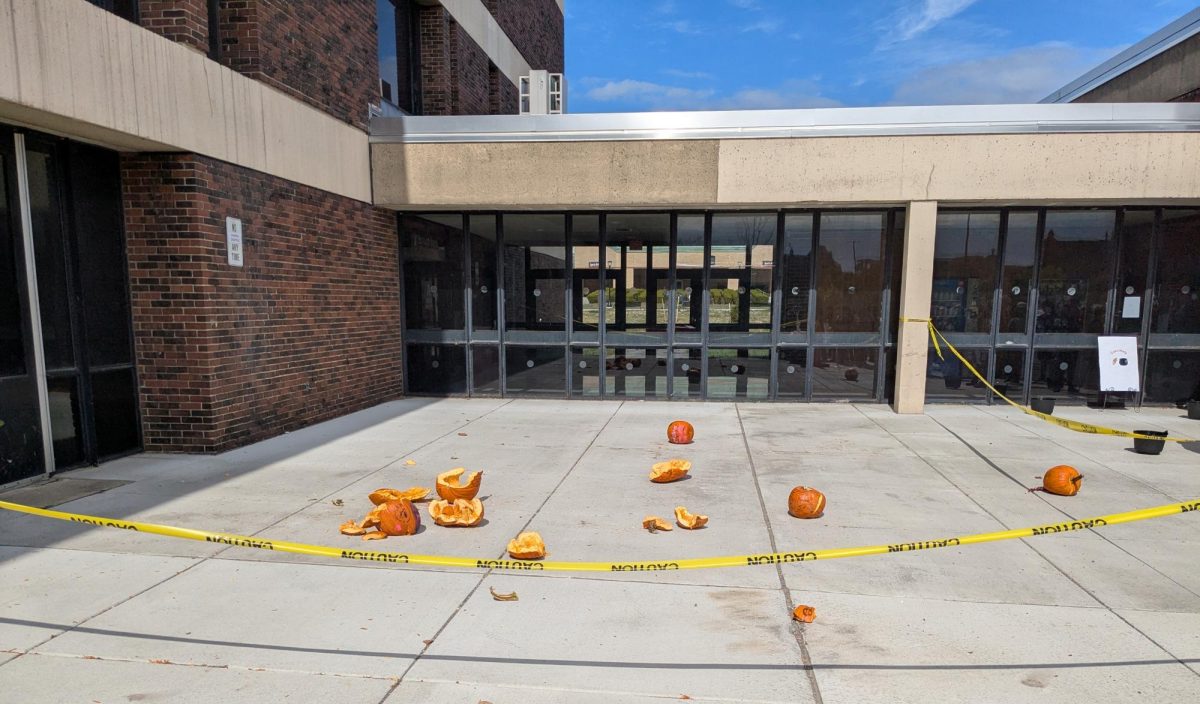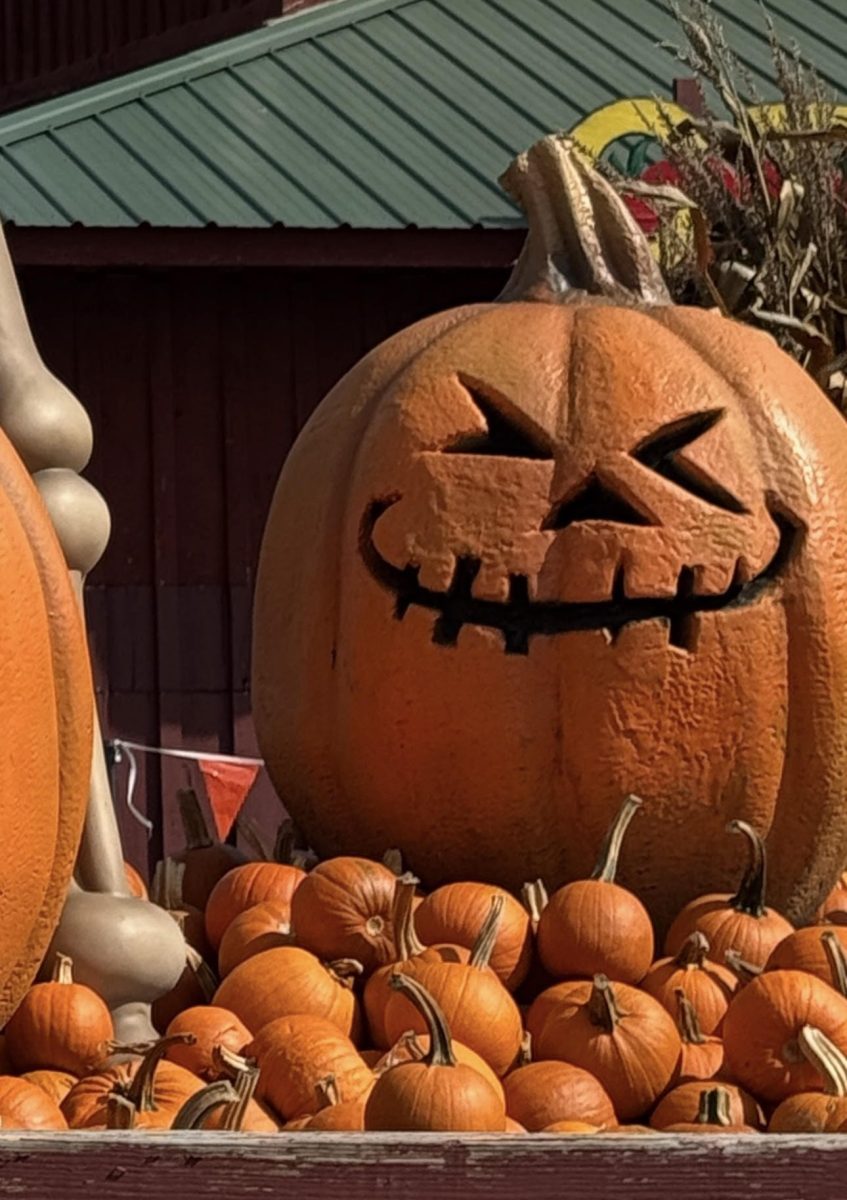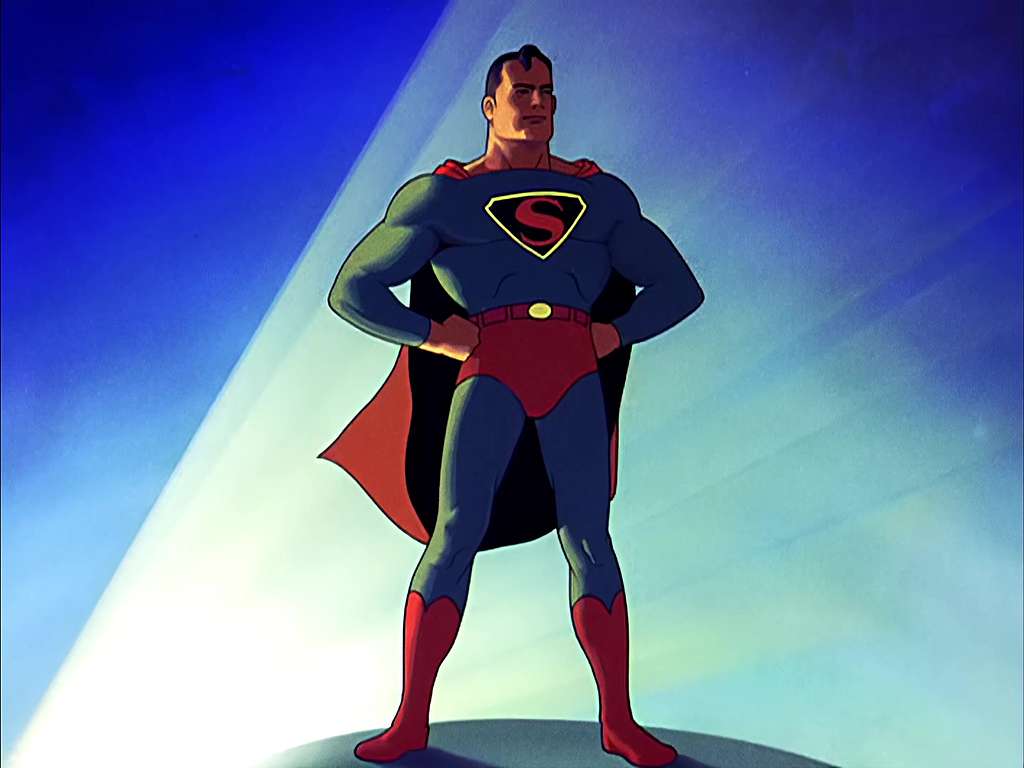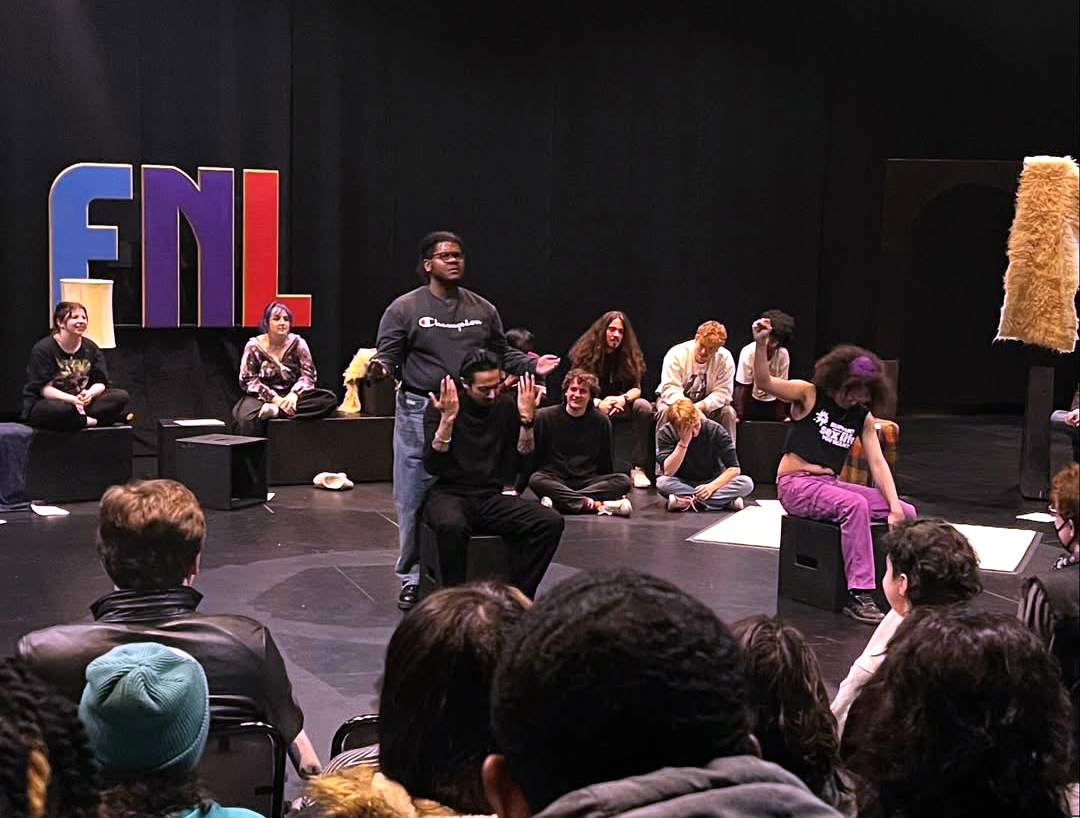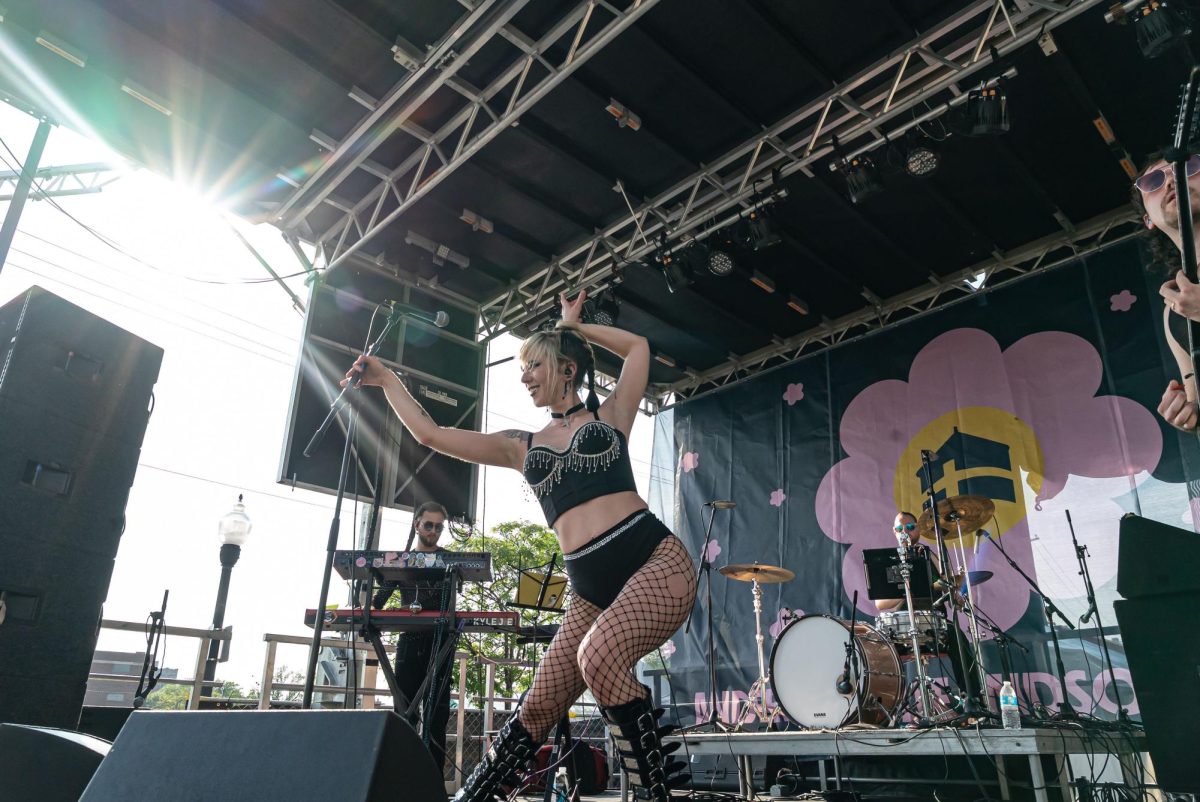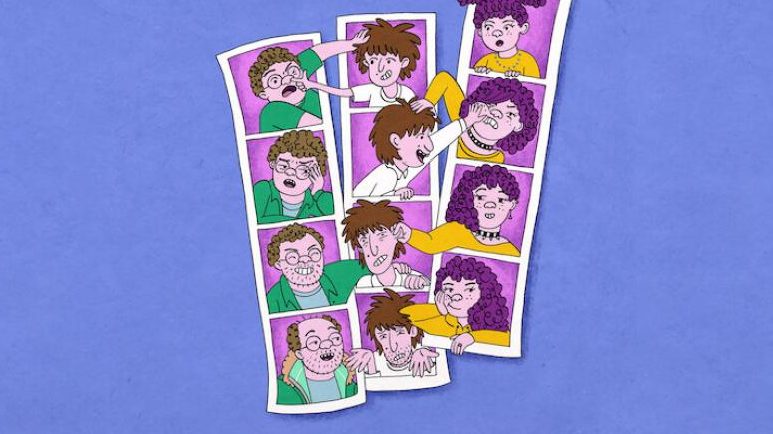The “Walk in her shoes” fashion show, held on campus this recent Indigenous People’s Day, took a unique take on fashion, with an emphasis on the meaning behind the clothing. Aiyana Jacy, a member of the Mohawk Nation, Turtle Clan, from the Six Nations of the Grand River in Oshweken, Ontario, Canada, used her creativity and clear talent for fashion to express an unknown crisis held close to her heart. Her mother, Tristan Jacy Salter, a member of the Mohawk Nation, spoke to the audience on her perspective on the crisis Missing and Murdered Indigenous Women (MMIW) created by her own, close to home, experiences. “Walk in Her shoes” was not an average fashion show, but a piece of art, an evening of gaining knowledge, and shared emotion.
In terms of giving the audience a comfortable, pleasant experience, the entirety of “Walk in Her Shoes”, went above and beyond. Upon entrance, attendees were greeted with a goody bag containing goodies such as candies, a notebook, pencil, additional information about the show, and most importantly the topic of the night, MMIW. A large variety of food and drinks were provided for guests. It is evident how much thought was put into the entirety of the “Walk in Her Shoes” experience based on the hospitality experienced immediately after stepping through the door.
The night began with Jill Clause leading guests through giving gratitude to the important blessings of this Earth that Indigenous People cherish. The entirety of this speech was beautifully spoken and set the tone for the rest of the night, bringing attention to the values that would later on be represented through fashion.
The night emphasized the unknown struggles that Indigenous Women face. More than six-thousand indigenous women have been reported missing throughout the United States. Indigenous Women also lead in cases of murder, rape, and sexual assault. These statistics are beyond concerning, and an issue that is rarely reported on. Guest speakers along with Tristan Jacy Salter, shared their personal opinions and experiences related to this crisis, reiterating that these statistics are not just numbers. Behind every case there is a person facing traumatic experiences, and a family struggling to support their loved ones, waiting for their return home. The stories were appalling. While saddening to hear, informing ourselves and gaining awareness is the first step in making change.
The clothing was modeled beautifully by Indigenous people and allies. As each model crossed the stage, their strength and passion radiated through the room. A wide variety of looks were shown, each hinting to the crisis. Colors of orange and red were highlighted, both with the deeper meaning of Indigenous People and their values behind them. Red is seen to be a color only spirits can see in some tribes, and as stated in the information provided at the show, “It is hoped that by displaying red dresses we can call back the missing spirits of our women and children so that we may lay them to rest”. Many models wore braids, which represent the unity of mind, body, and spirit. All pieces contained words of strength and, or information that must be shared to the day to day person. Not one outfit was shown simply because of the look. Every item had some greater thought behind it. Not only was each model’s style evident, but the message Aiyana was able to curate through each look shown powerfully through. Her love of fashion, and Indigenous Women were both thoughtfully represented, as well as her passion for making a difference in MMIW.
On a personal note, “Walk in Her Shoes” was not only a fashion show, but an experience I wish could be share with everyone. It is our social responsibility to make ourselves aware of what indigenous women face and hold ourselves as their allies.
To the crew behind “Walk in Her Shoes”, you have all of my admiration. You have opened my eyes and I hope to carry the message provided you have provided to me and all the audience members of the show.


